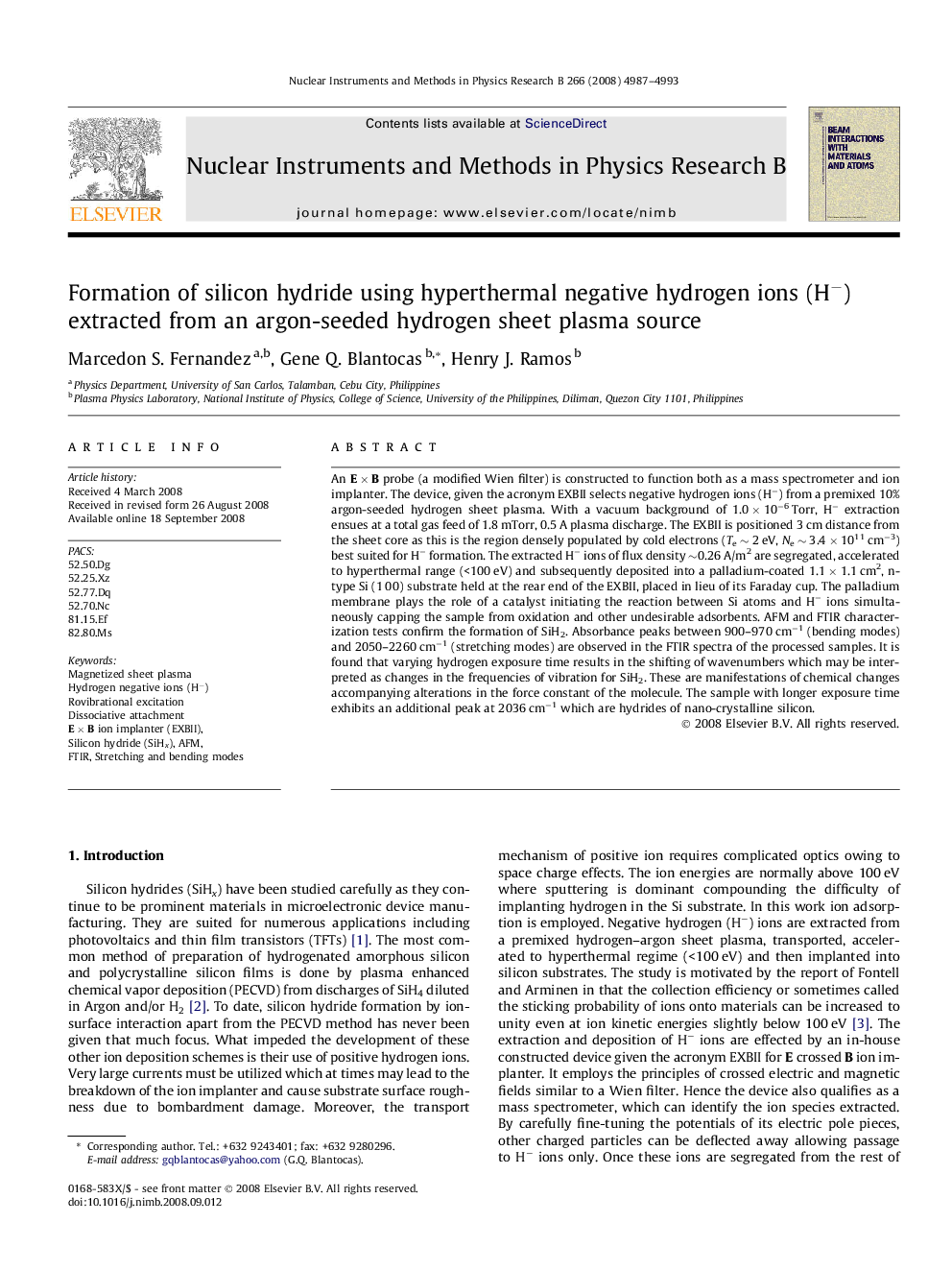| کد مقاله | کد نشریه | سال انتشار | مقاله انگلیسی | نسخه تمام متن |
|---|---|---|---|---|
| 1685541 | 1010566 | 2008 | 7 صفحه PDF | دانلود رایگان |

An E × B probe (a modified Wien filter) is constructed to function both as a mass spectrometer and ion implanter. The device, given the acronym EXBII selects negative hydrogen ions (H−) from a premixed 10% argon-seeded hydrogen sheet plasma. With a vacuum background of 1.0 × 10−6 Torr, H− extraction ensues at a total gas feed of 1.8 mTorr, 0.5 A plasma discharge. The EXBII is positioned 3 cm distance from the sheet core as this is the region densely populated by cold electrons (Te ∼ 2 eV, Ne ∼ 3.4 × 1011 cm−3) best suited for H− formation. The extracted H− ions of flux density ∼0.26 A/m2 are segregated, accelerated to hyperthermal range (<100 eV) and subsequently deposited into a palladium-coated 1.1 × 1.1 cm2, n-type Si (1 0 0) substrate held at the rear end of the EXBII, placed in lieu of its Faraday cup. The palladium membrane plays the role of a catalyst initiating the reaction between Si atoms and H− ions simultaneously capping the sample from oxidation and other undesirable adsorbents. AFM and FTIR characterization tests confirm the formation of SiH2. Absorbance peaks between 900–970 cm−1 (bending modes) and 2050–2260 cm−1 (stretching modes) are observed in the FTIR spectra of the processed samples. It is found that varying hydrogen exposure time results in the shifting of wavenumbers which may be interpreted as changes in the frequencies of vibration for SiH2. These are manifestations of chemical changes accompanying alterations in the force constant of the molecule. The sample with longer exposure time exhibits an additional peak at 2036 cm−1 which are hydrides of nano-crystalline silicon.
Journal: Nuclear Instruments and Methods in Physics Research Section B: Beam Interactions with Materials and Atoms - Volume 266, Issue 23, December 2008, Pages 4987–4993